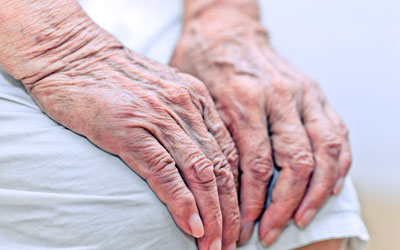Lithium Found to Reduce Mania in Older Bipolar Patients
Abstract
Most of the patients who did significantly better on lithium were those who had more severe mania at baseline.
Lithium is considered a topline therapy for controlling mania associated with bipolar disorder. However, many older patients do not tolerate lithium at the doses typically given to younger patients and are thus prescribed alternative medications.

A study published last month in AJP in Advance suggests lithium, even at a reduced dose, is as safe and effective as divalproex, another mood stabilizing agent. The findings were based on the first-ever randomized clinical study for late-life mania.
Study co-author Martha Sajatovic, M.D., a professor of psychiatry at Case Western Reserve University School of Medicine, said these findings provide some much-needed clarity for geriatric bipolar patients. Before this trial, most of the information guiding the use of lithium and divalproex was based on studies of younger adults with bipolar disorder.
“The demographic trends point to bipolar disorder becoming a larger and larger issue among older adults,” said Sajatovic, who is also the director of the geropsychiatry program at University Hospitals Cleveland Medical Center.
The GERI-BD trial enrolled 224 patients aged 60 years or older with bipolar I disorder who presented with a manic, hypomanic, or mixed episode. The participants were assigned to either lithium (target serum concentration, 0.80 mEq/L to 0.99 mEq/L) or divalproex sodium (target serum concentration, 80 μg/mL to 99 μg/mL) for nine weeks. These doses were lower than those traditionally prescribed to younger adults (thresholds of 1.20 mEq/L for lithium and 80 μg/mL to 120 μg/mL for divalproex).
During the first three weeks of treatment, patients received lorazepam if they had significant anxiety, agitation, or insomnia, and then oral risperidone if they failed to respond to the lorazepam and behavioral intervention. Only 17 percent and 14 percent of the participants taking lithium and divalproex, respectively, required rescue risperidone.
At the end of nine weeks, manic symptoms, measured using the Young Mania Rating Scale (YMRS), improved significantly in both groups, with the lithium group showing slightly better YMRS scores. Sajatovic told Psychiatric News that most of the patients who did significantly better on lithium were those who had baseline YMRS scores of 30 or higher. “It suggests that people with elevated mania would do better with lithium,” she said.
Response rates (50 percent or greater reduction in YMRS score) were 78.6 percent for lithium and 73.2 percent for divalproex; rates of remission (YMRS score ≤9) were 69.6 percent for lithium and 63.4 percent for divalproex. The study authors noted that the rates of response or remission in this study were similar to the rates reported in younger patients with bipolar disorder treated with lithium or divalproex even though the older patients received lower dosages and lower serum level targets of the medications.
Contrary to expectations based on existing literature, divalproex did not induce higher rates of sedation than lithium. However, as has been previously found, lithium did result in more cases of tremor. Other side effects, including nausea and weight gain, were similar in both groups.
Sajatovic added that attrition rates were also similar for lithium and divalproex. The dropout rate was 14 percent for lithium and 18 percent for divalproex after 3 weeks, and 51 percent for lithium and 44 percent for divalproex after 9 weeks—rates the authors noted are also similar to those found in studies of younger patients with mania.
“These results suggest that treatment guidelines for older persons with bipolar disorder should emphasize greater use of lithium and less exposure to antipsychotics,” Sajatovic and her colleagues wrote in the AJP article. They noted that in addition to lithium’s mood-stabilizing properties, previous studies suggest the medication may reduce the risk of dementia. In contrast, the authors noted “antipsychotics have been associated with serious adverse effects in older adults, including premature mortality.”
GERI-BD was supported by grants from the National Institute of Mental Health and National Center for Research Resources. Janssen Scientific Affairs provided risperidone to some study sites. ■



